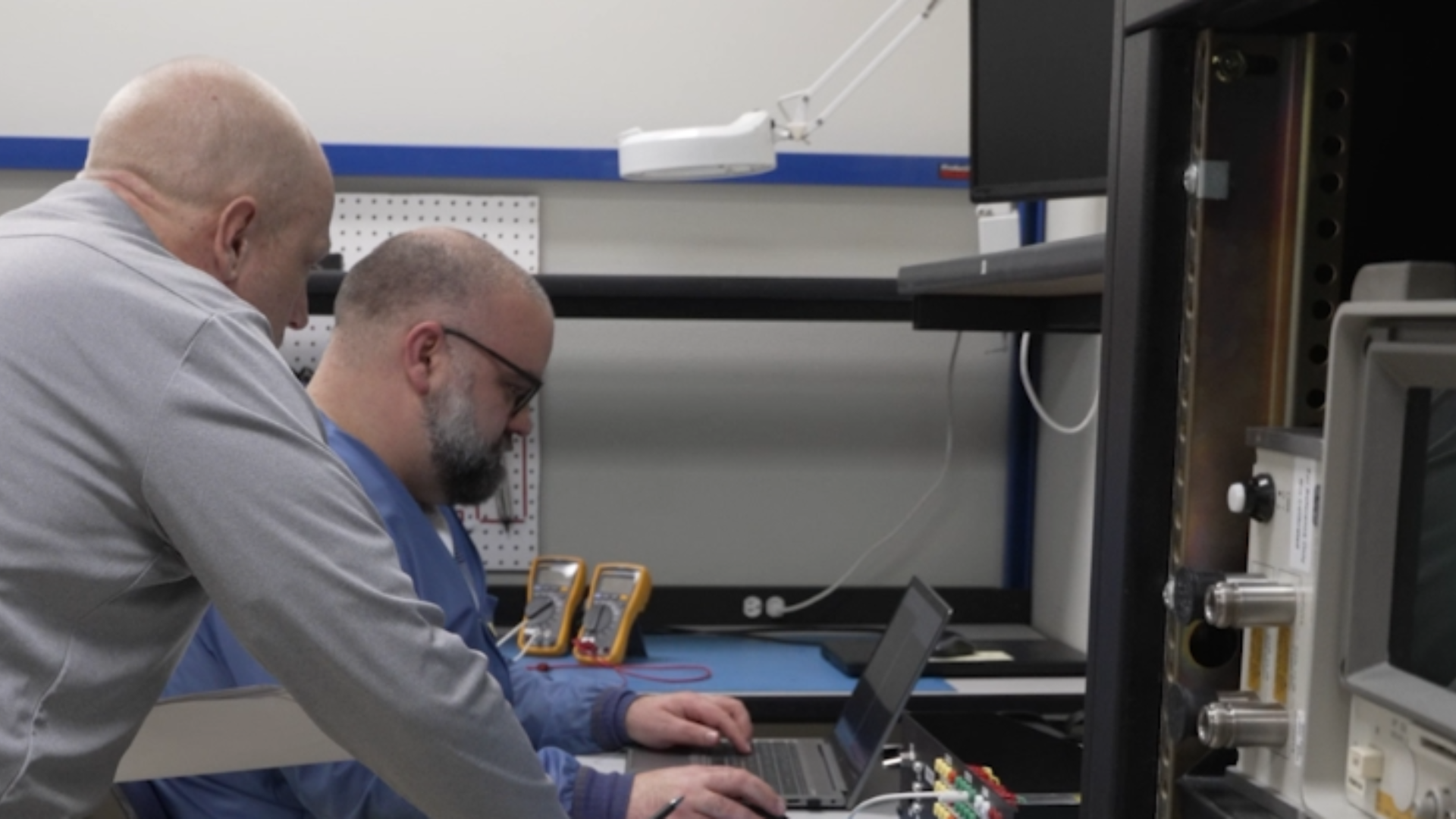Electronic Component Design Registration
Design Registration - Lock in Pricing, Protect Your Build
Design registration is the act of documenting your component selections with a manufacturer via a distributor or EMS partner. It's also your ticket to securing pricing and supply in today's chaotic electronics landscape. It's like raising your hand to say, "This build's for real," unlocking perks like exclusive pricing, priority allocation, and engineering support to smooth your path to production.
Design registration is one of the most effective ways to ensure your electronic component strategy supports pricing stability, supply chain resilience, and efficient transitions to volume production. It secures exclusive pricing, priority allocation, and engineering support by formally documenting your component selections during the design phase. OEMs and EMS providers who leverage registration gain a competitive advantage, not only in cost, but in execution, visibility, and risk reduction.
Your Strategic Supply Chain Advantage
In today's electronics supply chain, securing the components you need at the price you want can be a competitive, chaotic, and costly endeavor. That's where design registration proves invaluable.
Leading EMS providers advise design engineers to engage early with suppliers and their supply chain specialists to ensure that component decisions are not only technically sound but commercially viable. By involving experts early in the process, teams can proactively identify risks, such as long lead times, obsolescence, or single-source components - while there's still time to make changes that won't derail the design or timeline.
One of the most compelling benefits of design registration is the ability to secure exclusive pricing. Component manufacturers often reward the registering part, whether it's an OEM, EMS provider, or distributor, with discounted pricing once the design moves into volume production. That pricing is locked and protected, meaning other competitors quoting the same component for the same design won't have access to those rates.
What is Component Registration and Why Does It Matter?
Component registration is the strategic process of selecting, validating, and formally documenting the electronic parts that make up your product's bill of materials (BOM). While it starts with choosing parts based on electrical performance and mechanical fit, in today's complex supply chain, it extends far beyond internal record-keeping.
Through design registration programs, companies engage directly with manufacturers and authorized distributors to gain supply chain advantages that go well beyond part numbers. By registering components during the design phase, OEMs and EMS providers can unlock preferential pricing, ensure allocation priority, and secure access to technical support and lifecycle visibility.
Component registration turns your BOM from a list into a strategy. It allows stakeholders to proactively address risks like obsolescence, sole-sourced components, and long lead times. It's not just about what fits on the board - it's about what can be built at scale, on time, and on budget.
By making registration part of your standard design workflow, you not only build smart - you build stronger, with the supply chain on your side.
Benefits of Design Registration
The rewards of component registration ripple across your project, delivering both immediate wins and long-term value. Let's break down the key benefits, spotlighting how they strengthen your supply chain and bottom line.
Here's why it matters:
- Exclusive Pricing: The distributor who registers your design gets special pricing that others can't touch. This protects your margins and keeps competitors from undercutting you.
- Priority Allocation: When shortages hit or markets get shaky, registered designs jump to the front of the line for component fulfillment.
- Price Stability: Registered pricing often stays steady over set terms or volumes, shielding you from market ups and downs.
- Engineering Support: Distributors throw in technical perks - like Field Application Engineers (FAEs) and free samples - to help refine your design.
- Global Support and Rebates: Many suppliers respect design registrations across build locations, tossing in rebates or split-margin deals to keep things consistent.
These perks don't just save cash - they build a supply chain that lasts, from prototype to years of production.
The Design Registration Process: A Step-by-Step Guide
Ready to get started? Here's a straightforward, actionable guide to registering your components, complete with practical tips:
- Build Your BOM Strategically: Kick things off by choosing multi-sourced components to dodge supply bottlenecks - check lead times and stock levels early.
- Partner with Experts: Team up with a distributor or EMS provider (like SMT) to scan your BOM for risks and hidden opportunities.
- Submit the Registration Request: Share project details - think volume, timeline, and end customer - with your supplier through your partner.
- Track Your DR#: Once you've got your Design Registration Number, use it to keep tabs on pricing and allocation status.
- Update as Needed: If your design changes (like swapping a part), let your partner know ASAP to keep your benefits locked in.
The Pricing Power of Registration
Design registration isn’t just about securing a better price—it’s about locking in pricing discipline across your supply chain. When a design is formally registered, the component manufacturer enforces strict exclusivity: only the distributor or EMS provider who earned the design win receives access to the special pricing. This protected status gives OEMs and EMS partners the confidence to quote aggressively, forecast accurately, and plan production without fear of pricing surprises or backdoor deals.
Without registration, the same design can be quoted by multiple distributors, creating a chaotic environment of undercutting, inconsistent pricing, and margin erosion. These unregistered designs become “jump balls” in the distribution network, often resulting in support gaps, sourcing confusion, and increased risk of delays.
Worse yet, in times of market volatility or allocation, unregistered projects often fall to the back of the line. Registered designs, on the other hand, are prioritized because they represent verified, committed demand.
In short: registration gives you control. It stabilizes costs, clarifies sourcing, and protects the integrity of your supply strategy from prototype through production.
Challenges and Solutions
Let’s face it—design registration isn’t always straightforward. With each manufacturer having its own rules and requirements, navigating the process can feel like solving a puzzle without the box. But the obstacles are manageable when you know what to look out for and the right EMS partner.
Here are some common roadblocks and how to overcome them:
- Challenge: Component Obsolescence
Even registered parts can be discontinued or reach end-of-life unexpectedly.
Solution: Work closely with your EMS partner to identify potential risks early. Keep your Approved Vendor List (AVL) current and include validated alternates whenever possible. - Challenge: Pricing Pushback
Suppliers may hesitate to offer discounts, especially without a solid business case.
Solution: Bring strong data to the table—include volume forecasts, project timelines, and competitive insights to make a compelling case for preferred pricing. - Challenge: Design Changes
Even small tweaks to your design can jeopardize registration benefits.
Solution: Notify your EMS or distributor partner immediately if your BOM changes. Keep your Design Registration Number (DR#) updated to maintain continuity of benefits.
By anticipating these challenges and responding proactively, you can keep your registration efforts on track—and get the full value they’re designed to deliver.
Conclusion: Register Early, Build Smart
Registering components during the design phase isn’t just good practice—it’s a strategic imperative. It locks in exclusive pricing, safeguards availability, and enables more accurate forecasting and quoting. It brings together engineering, sourcing, and operations under a unified goal: building smarter, stronger, and more reliably.
Design registration delivers financial savings through protected pricing, operational efficiency through streamlined supplier engagement, and long-term risk reduction via proactive planning. It transforms your bill of materials into a competitive advantage.
Working closely with your EMS partner, you gain access to supplier networks, preferred pricing, lifecycle insights, and a clear path through allocation challenges. EMS providers who prioritize design registration align their engineering and supply chain teams to make your product not only manufacturable—but profitable and scalable.
So don’t wait for chaos to hit. Register early, communicate often, and partner with organizations that understand the value of strategic design execution.
The SMT Approach
At SMT, we simplify the entire design registration journey. From identifying registerable components and submitting paperwork to coordinating with authorized suppliers and tracking approvals—we manage the process end-to-end.
Our philosophy is simple: great designs don’t just work in theory—they scale in the real world. With SMT, you get a proactive partner who understands both the technical and commercial sides of electronics manufacturing.
Join Our Subscribers
You May Also Like
These Related Stories

How to Optimize Your Supply Chain with an EMS Partner

Tariffs, Reshoring, and Supply Chain Strategies in the EMS Industry


